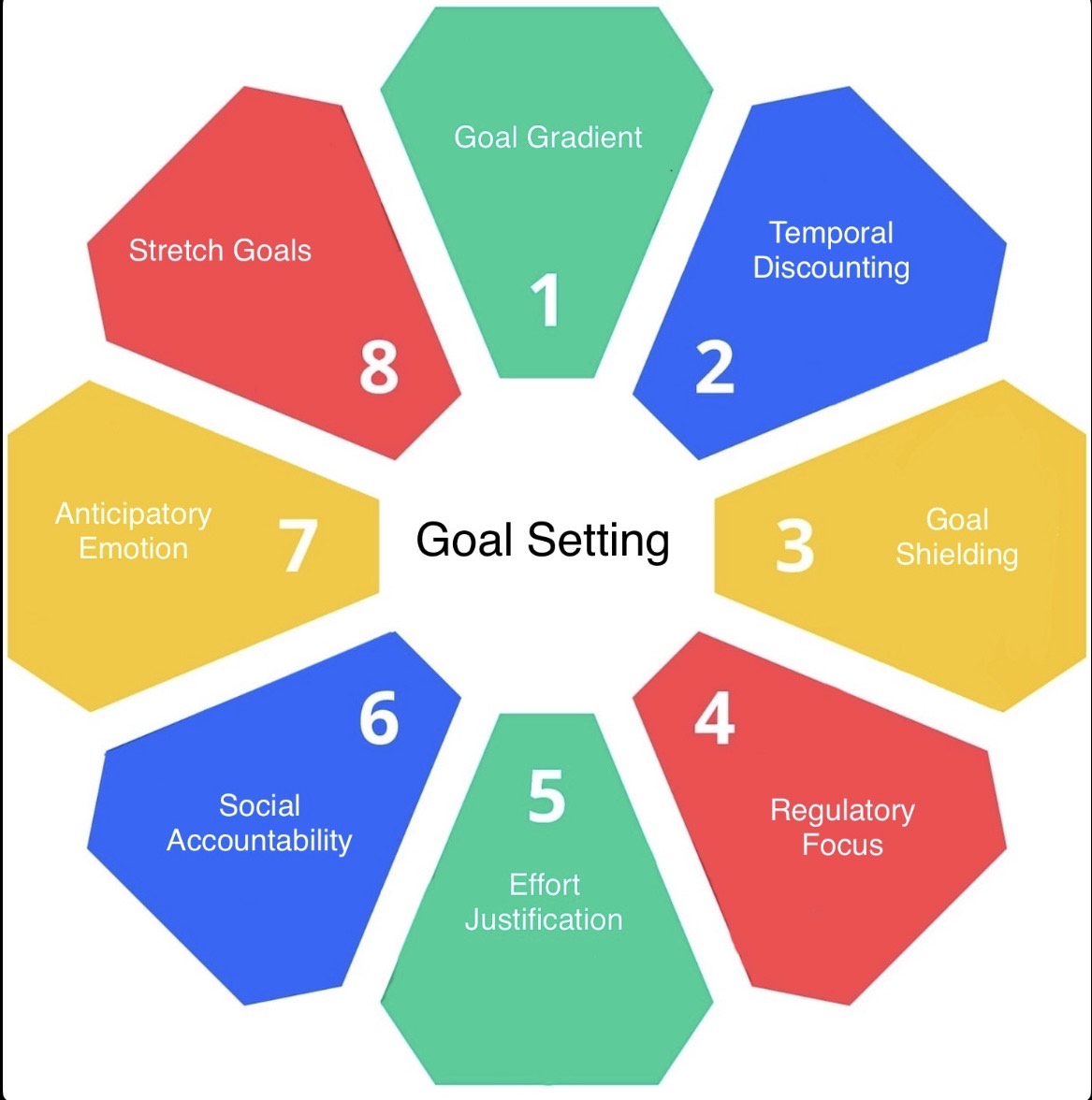Goals are at the core of organisational performance. Goals offer a reason to push forward, transform effort into meaning and vision into reality. SMART goals provide structure and clarity, but they often miss the emotional and psychological factors that drive true motivation. They focus on measurable outcomes but may overlook the dynamic nature of human ambition. By incorporating principles from behavioural and cognitive psychology teams can design goals that connect emotionally and sustain momentum. This approach transforms goal setting from a task-focused “nice to do” exercise to a deeply personal, powerful and purposeful level for performance excellence.
One such principle is the Goal Gradient Effect, which highlights that journey toward a goal isn’t linear; motivation peaks as the finish line comes into view. This principle underscores the psychological power of proximity. Understanding this dynamic enables organizations to structure goal-setting processes that sustain momentum throughout a task. Long term goals can often feel abstract or distant. Breaking these into incremental milestones with visible progress markers—such as project phase completions, stakeholder approvals or fortnightly milestones —can maintain energy and focus.
| Principles | Details |
| Goal Gradient Effect | Motivation peaks as the finish line comes into view |
| Temporal Discounting | Perceived value of reward diminishes the further it lies in the future |
| Goal Shielding | The need for protecting primary goals |
| Regulatory Focus | People get motivated either on achieving positive results or avoiding negative outcomes |
| Effort Justification | The tendency of valuing outcomes more due to significant effort invested achieving them. |
| Social Accountability | Responsibility shared within a group to enhance commitment and follow-through. |
| Anticipatory Emotions | Emotions experienced while imagining or anticipating a future event. |
| Stretch Goals | Stretch goals are ambitious, objectives designed to push individuals or teams beyond their current capabilities. |
The challenge of Temporal Discounting highlights a psychological bias where the perceived value of a reward diminishes the further it lies in the future. It also explains why people struggle to stay motivated for distant goals. Bridging the gap between present actions and future outcomes is essential to sustain engagement, ensuring long-term objectives are not neglected in favour of immediate gratification. For example, if the HR team is working on a three-year diversity and inclusion strategy, it can establish quarterly or biannual achievements—like completing focus groups, launching pilot initiatives, or achieving initial representation targets. These short-term milestones not only make progress visible but also provide opportunities to celebrate success, establish linkage with different forms of recognition and thus keep the team energized and committed to the larger, long-term vision.
Often it is important to state the difference between Goal Gradient Effect and Temporal Discounting. They are both rooted in motivation and decision-making psychology, but they focus on distinct aspects of human behavior and influence goal setting in different ways. Goal Gradient Theory focuses on the progress effect and intensifying motivation near completion. Temporal Discounting addresses the time-based devaluation of goals and strategies to sustain motivation when the payoff is far in the future.
Goal Shielding emphasizes prioritisation and the need to protect primary goals from competing priorities and distractions. It is based on the idea that to achieve significant outcomes, individuals and teams must focus their energy on what matters most while temporarily sidelining secondary objectives. Success isn’t just about setting goals—it’s also about maintaining focus. While setting goals, staggering deadlines of primary and secondary goals or revisiting the primary goals in regular meetings ensures clarity and focus. For instance, shifting a secondary goal around exploratory market benchmarking research to the following month after the new product rollout prevents distractions, allowing the team to concentrate on timely delivery of primary goal.
Another principle is Regulatory Focus. It is a psychological theory that describes how people pursue goals and make decision. It’s based on the idea that people can focus on either achieving positive outcomes (promotion focus) or avoiding negative outcomes (prevention focus). The promotion focus is centred on aspirations and gains, and prevention focus, driven by avoiding losses. Personalising goals to these styles enhances engagement and language resonance. For example, promotion-focused employees might respond well to goals like achieving the highest customer satisfaction, while prevention-focused employees may resonate with minimizing customer complaints. By tailoring the framing of goals, organizations can foster a deeper connection between employees and their objectives, leading to better outcomes.
Effort Justification is a concept from the world of cognitive dissonance. The premise is when people have to work hard for a goal or exert significant effort, they tend to ultimately place greater value on whatever goal they achieved. For an individual often the ratings on those “special” goals matter more than others. If there is a significant mismatch in perception of the outcome and the value those goals deliver, regular dialogue is a powerful way to bridge the gap. By addressing effort justification thoughtfully, managers can help employees feel their hard work is valued, boosting motivation and engagement.
Goals evoke emotions. However, the role of Anticipatory Emotions in goal setting is often less understood. There is a nuanced difference between Anticipated emotions and Anticipatory emotions. Anticipated emotions are the feelings one expects if a hypothetical future event were to occur, whereas anticipatory emotions are those one experiences right now while imagining the event. When we envision the desired impact and connect with how it will make us feel, our brain’s reward circuitry. This allows our bodies to respond with greater motivation, focus, resilience, and ultimately success . For example, imagining the sense of pride and contribution to hundreds of patients and their families as a result of a new drug discovery can fuel enthusiasm and commitment across the team.
Setting specific goals is far easier than the process of working toward them and, eventually, seeing intentions come to fruition. Social Accountability plays a critical role by enhancing follow-through by leveraging peer influence. Publicly committing to goals during team meetings fosters a culture of mutual accountability. Sharing individual and team objectives quarterly, for example, creates visibility , strengthens commitment and builds a supportive environment.
Stretch goals are a powerful tool for driving growth and distinguishing performance, but they must be crafted with purpose. Typically set for high-achieving employees, these goals align with their career aspirations and provide opportunities to excel. However, the need for stretch goals can vary by career stage, and overuse may diminish their impact. To ensure success, assign stretch goals selectively and support them with resources like mentorship or coaching. For instance, a high-potential employee tasked with revitalizing a low-performing team can thrive with tailored guidance and tools to navigate leadership challenges.
It may be worth taking a moment to reflect on the current goal-setting practices. Is there an opportunity to integrate these principles to not only drive results but also inspire and empower the team?
Goal setting is more than a management tool—it is a gateway to unlocking potential, fostering innovation, and achieving excellence. By deeply understanding the psychological drivers of motivation, managers have the power to transform goals from mere tasks into shared missions that inspire and energize teams. When goals are crafted with care—balancing ambition with achievability, personal relevance with organizational impact—they become a catalyst for extraordinary progress. Let the goal-setting process be the foundation of a thriving, purpose-driven workplace where every individual feels valued, motivated, and empowered to succeed.









